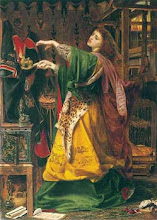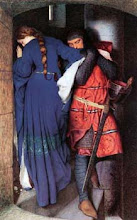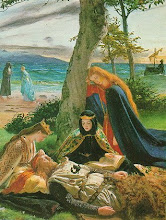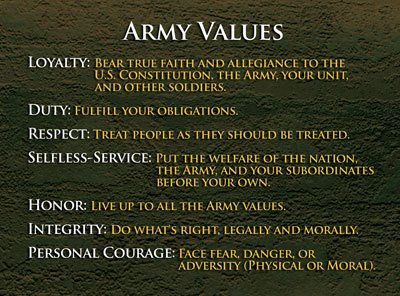
Chivalry is the generic term for the knightly system since the Middle Ages and for virtues and qualities, it inspired in its followers. The word evolved from terms such as chevalier (French), caballero (Spanish), and cavaliere (Italian), all meaning a warrior who fought on horseback. The term came to mean so much more during medieval times.
Chivalric orders first appeared with military activities against non-Christian states. During the Middle Ages,
However, in the thirteenth century conventions of chivalry directed that men should honor, serve, and do nothing to displease ladies and maidens. Knights were members of the noble class socially as bearers of crests, economically as owners of horse and armour, and officially through religious-oriented ceremony. While some were knighted on the battlefield, most spent long years as a squire, practicing the art of war while serving his master. People during the Middle Ages heard of the exploits of knights both mythical and real in epics like La Chanson de Roland and Le Morte D'Arthur.
“In thirteenth century, the Chivalry constituted a Western entirety, a sort of delimited body, and really established and centralized in a social conjecture. The Chilvary did use of superiority and excellence allied to nobleness sense, involved through the dominant values in a determined culture. How have forged the models, the images, the mental representations which have granted this body in significative shape and that installed to eminent position? How have reached coherently and have found their limits? How finally the idea of nobleness have coincided with the Knighthood ideals?” (Duby, 1989, p. 209)
According to questions suggested by Duby in his article “The origins of Chivalry”, published in 1968, attempts to analyze the Chivalry class. Shall we settle the chivalry around twelfth century and analyze the importance of this fusion of images and mental represetantions.
In another hand, the society around twelfth century was a Christendom society, and one of the purpose to be inserted in this society as citizen, it’s necessary be a Christian. (Pastoureau, 1989, p. 33).
This concept of citizen we shall discuss about the knight inserted in this society. Theorically, all baptized men have access to the chivalry: each knight may become a knight, who judge theign to be a knight, do not mind what origin or social condition. (Pastoureau, 1989, p. 42)
However, this practice has not happened. In half twelfth century, the knighthood tends to suffer some specifically changes.
Be a knight has transformed in act exclusively to the children of knights, whether the possibility of someone from plebe arises to the title of knight, it was basically a mercy coming from goodness of noble lord. The Knighthood tends to become a hereditary institution. We can suggest the accolade of simple serves becoming knights we might use the “chansons de geste”.
The knight’s life, according to Georges Duby in his book Chanson de Guillaume le Maréchal was pleasant life and full of adventurous, being a knight could mean, ostent another standard of life, a life of tournaments. Supportting this model, it was necessary good steeds, which is called ‘destrier.
A Destrier was a war horse which were used by Knights in the Middle Ages. It was brought to England by William the Conqueror following his victory at the battle of Hastings in 1066. A horse played an extremely part in the life of knight. These knights horses ranged in various sizes starting with a palfrey, or an ambler for general travelling purposes. Bigger and stronger horses were required as warhorses. The Courser was the most sought after and expensive warhorse, owned by the most wealthy knights. The more common warhorses were like modern hunters, including good stuffs for weapons, meaning got some amount of worth, or rather, become a knight and attend jousts and tournaments should be someone who belongs to nobleness.
The “chansons de geste” are very important to demonstrate what is really a knighthood culture, however it was not utterly christianized through members of chivalry whom, indeed, they were faith to ideals preached by Catholic Church. Despite, there was a military and heroicic profiles from some models of Christain Will regarded particulary been able to conquest and serve as propaganda instruments. (Cardini, 1989, p. 61)
For shall be popular, the ‘chansons’ had major facility in penetrate in the Chivalrous conscience; in this, they are more acceptable and correct defend as the liturgical formules and the hagiographic literature, whether is adapt to them , about to we shall have only introduce more solid into that we call collective imaginary from Chivalrous society. Being clearer , the “chansons” have been a sort of instruments used by Church (same as unconcious ,aslike might be affirmed). Anyway, the ‘chansons of geste’ were the reflection from the winds what they blew out in that period
Indeed the Chivalry was not just a nobleness and gentle quest, but this Chivalrous behaviour has arisen in Rome which the ideal was ally politic interests, inserting the “Eternal Faith” as concepts, and unconsciously rescued questions of values and models to rule the society.

The 13 Principles of Chivalry
1. A True Knight must be a gentleman yet fails not in duty.
2. A True Knight must uphold the Dignity of Man and Woman, remembering that all are born free and equal in Dignity and Rights.
3. A True Knight’s manner of living is an example to the young.
4. A True Knight shall at no time act outrageously nor do murder or be cruel in any way to man or beast.
5. A True Knight respects and defends the rights of all men and women to hold and practice religious beliefs other than his own.
6. A True Knight takes no part in wrongful quarrel but at all times supports the Lawful rights of all men and women.
7. A True Knight’s word is his bond.
8. A True Knight must be honorable in all things and know good from evil.
9. A True Knight must be of modest demeanor and not seek worship unto himself.
10. A True Knight must seek out such Quests as lead to the protection of the oppressed and never fail in Charity, Fidelity and the Truth.
11. A True Knight speaks evil of no man. A slanderous tongue brings shame and disgrace to an Honorable Knight.
12. A True Knight never betrays a trust or confidence given to him by a brother Knight.
13. A True Knight must so order his life that by his contributions the people of the world may hope to live together in greater peace and tolerance.
Chivalric Codes
There were several lists written down during the Middle Ages. One example code can be found in the book Chivalry by 19th century French historian Leon Gautier
* Thou shalt believe all that the Church teaches, and shalt observe all its directions.
* Thou shalt defend the Church.
* Thou shalt respect all weaknesses, and shalt constitute thyself the defender of them.
* Thou shalt love the country in which thou wast born.
* Thou shalt not recoil before thine enemy.
* Thou shalt make war against the Infidel without cessation, and without mercy.
* Thou shalt perform scrupulously thy feudal duties, if they be not contrary to the laws of God.
* Thou shalt never lie, and shall remain faithful to thy pledged word.
* Thou shalt be generous, and give largess to everyone.
* Thou shalt be everywhere and always the champion of the Right and the Good against Injustice and Evil.
Bibliography
CARDINI, Franco. O Guerreiro e o Cavaleiro. In: LE GOFF, Jacques (sob direção de). O HomemMedieval. Lisboa: Editorial Presença, 1989.
DUBY, Georges. A História Continua. Rio de Janeiro: Jorge Zahar Editor / Editora UFRJ, 1993.
PASTOUREAU, Michel. No Tempo dos Cavaleiros da Távola Redonda (França e Inglaterra, séculos XII e XIII). São Paulo: Companhia das Letras / Círculo do Livro, 1989.
On line text:
http://www.middle-ages.org.uk/destrier.htm
http://www.orderofthegrail.org/chivalry.htm
http://en.wikipedia.org/wiki/Chivalry#Chivalric_codes


































0 comments:
Post a Comment